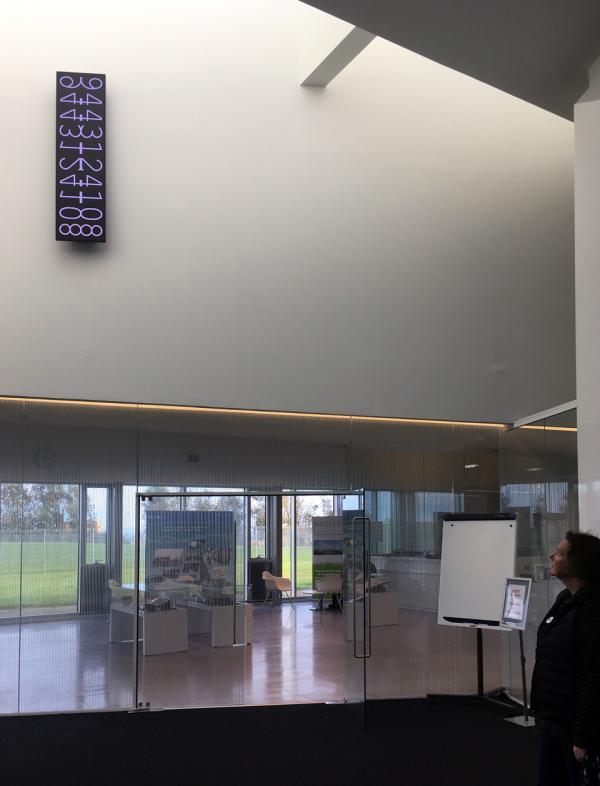
Temporary Index is an artwork by Jon Thomson and Alison Craighead. The work is comprised of an array of counters that mark sites of nuclear waste storage across the world. Each counter marks the time in seconds that remains before these sites of entombed nuclear waste become safe again for humans. The live decay-rate counters, markers of time as well as place, are adapted to the specific sites in which they are shown, and can be presented as the whole array of counters, or as single totem clocks.
In 2017-2019 Thomson & Craighead were commissioned by the NDA and High Life Highland to create a 'Temporary Index' counter for Nucleus the newly built Nuclear and Caithness Archive at Wick, Scotland. The Nucleus building is home to the archives of the UK civil nuclear industry and the historical archives of the county of Caithness.
Temporary Index is a totemic object of contemplation providing a way for humans to measure ourselves against the long atomic time frames recorded in the Nucleus Archives, which will be passed on from generation to generation. The final time period that the clock will be set to count is currently being discussed by the NDA. One option is to count 100 years, the potential period of time that a waste package may have to undergo interim storage before it can potentially enter a geologic disposal facility. The other option is to count down one of the most common radioactive isotopes produced in nuclear reactors, Caesium-137, which has a half-life of about thirty years. Nuclear regulators recommend that radioactive isotopes in waste should be isolated from the biosphere for ten times their half-life. At the moment, the Temporary Index clock at Nucleus is counting down for the next 300 years and was started at midnight on 1st January 2019.
The artwork was commissioned by curator Ele Carpenter in partnership with Arts Catalyst, and exhibited as part of Perpetual Uncertainty (Bildmuseet, Z33 House of Contemporary Art, Belgium, Malmo Konstmuseum 2016-2018), Material Nuclear Culture, (KARST Gallery Plymouth, 2016), and Carroll/Fletcher 2016. The research for the artwork included site visits to: LLW Ltd at Drigg, UK; Horonobe Underground Research Lab, Hokkaido, Japan; and HADES Underground Research Lab in Mol, Belgium; and a residency at HUMlab in partnership with Bildmuseet, Umea University. Supported by Arts Council England.